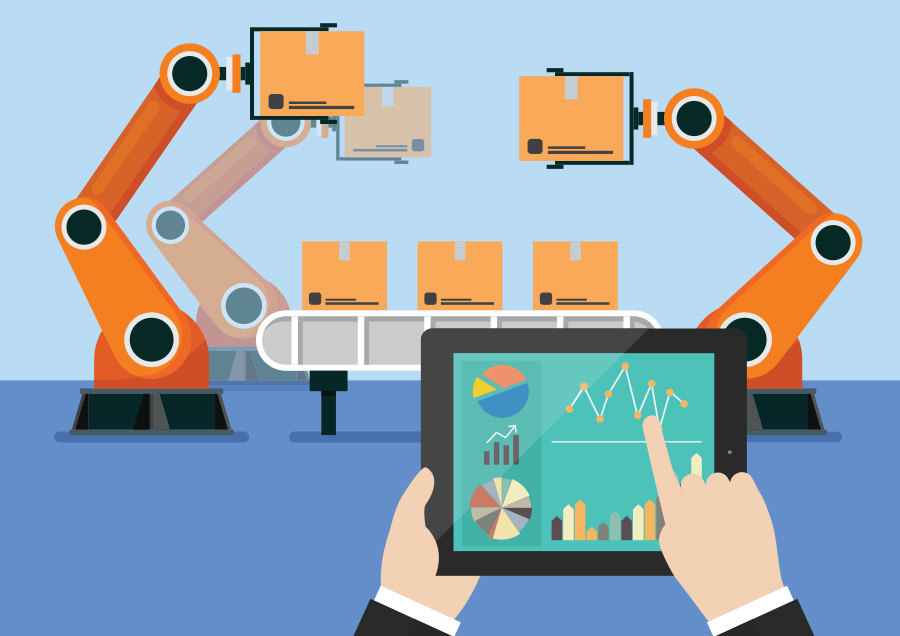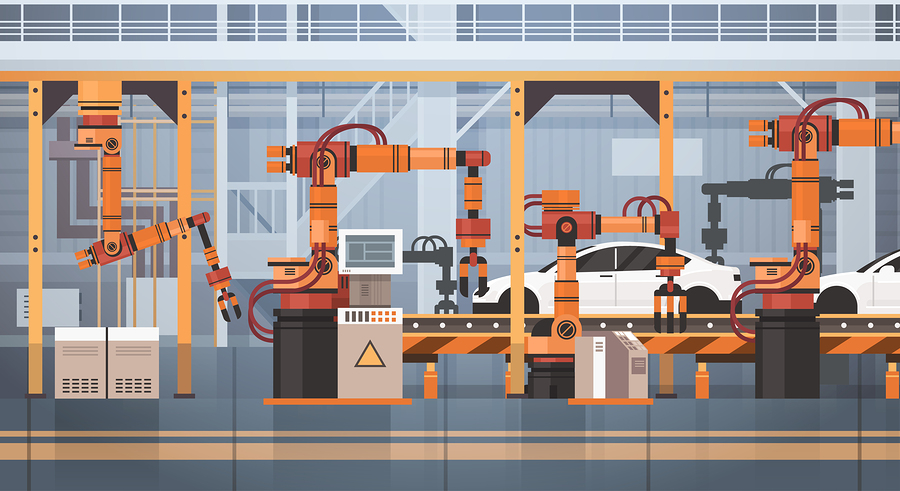In part one of our series on the Industrial Internet of Things (IIoT) in manufacturing, we explored IIoT history and how the same technological advancements transforming the ways people interact with their homes are also transforming how manufacturers handle production and manage their businesses. Next, we’ll explore some IIoT innovations manufacturers expect to see in the near future. What will these changes mean for those who have not yet adopted new manufacturing technologies?
What could the IIoT do?
IIoT technology makes it possible to connect, monitor, and control every piece of equipment needed for manufacturing from a single hub, often a device as ubiquitously available as a smartphone or tablet. Manufacturers are using IIoT technology to boost productivity, improve safety, decrease downtime, and increase their profits. As engineers design better, less expensive networks, devices, and related hardware, more manufacturers will likely make the switch to IIoT-enabled facilities either by retrofitting their existing technologies or investing in new systems.
Manufacturers will likely continue applying IIoT tech in three primary ways: for monitoring, control, and delivery. Here are several practical examples of how a human operator or an AI system could leverage IIoT functionality in manufacturing facilities.
- They could make repairs before systems malfunction because sensors can detect issues as soon as they arise.
- Continuous monitoring can reduce the need for unnecessary human action. For example, automated processes could alert manufacturing professionals when waste containers were about to fill up, allowing them to empty waste containers only when necessary rather than on a continuous schedule.
- Sales will likely become much more responsive as IoT technology gives manufacturers unprecedented insights into how consumers use products, allowing them to anticipate needs and trends much more effectively.
- AI is also set to impact diagnostics and repairs as it allows some systems to self-correct as problems arise. In addition, predictive maintenance prevents problems from occurring in the first place.
How could the IIoT change industry expectations?
Just like today’s customers would balk at a television set that didn’t come with a remote control and required them to use a dial on the set, manufacturers will soon expect IoT technology to be the norm. This will be true not only for near-future consumers but also savvy manufacturing employees who will undergo training to use equipment with this added technology.
Technology adoption tends to come in phases with those on the cutting edge being the first adopters and holdouts the last. If IIoT adoption goes the same way, holdouts can expect some serious consequences extending from the choice to delay or avoid adopting IIoT practices. In fact, many manufacturing companies could very well fall behind.
- Up to 25% of manufacturers worldwide will switch to IIoT technology by year-end 2019 to manage predictive and preventive customer service. The other 75% will likely suffer from customer attrition as they are no longer able to meet consumer demands.
- IIoT will allow manufacturers to increase collaboration with their clients. Those who do not adapt will likely be left out, missing out on the collective knowledge others share.
- Simulations and digital twin technology will allow early adopters to begin improving product quality, making them more competitive and better able to satisfy customers.

Many cutting-edge adopters have already implemented the IIoT in their facilities and are seeing return on their investments. Following close on their heels, holdouts are now making the switch. Over the coming year, manufacturers can expect the IIoT to change the manufacturing industry in many ways.
- Major players like Microsoft, Amazon, and Google will provide the cloud technology through which manufacturers will begin offering services.
- Investment in IIoT networks will continue to surge as device use becomes a logistical reality.
- The IIoT data collection will allow manufacturers to transform end-user experiences through prescriptive improvements.
If you are ready to start adopting some of this technology in your own facility, look for part three in our series on the IIoT in manufacturing for practical tips on getting started.
